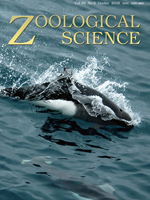Salamanders are expected to differentiate genetically among local populations due to their low dispersal ability, and are potentially susceptible to loss of genetic diversity if the population is isolated by habitat fragmentation. The salamander Hynobius tokyoensis is a lowland lentic breeder and endemic to a narrow area of central Japan. In this urban area, H. tokyoensis habitats are extensively fragmented and several populations are threatened with extinction, but information on genetic divergence and loss of genetic diversity is scarce. We performed mitochondrial (cyt b) and microsatellite (five loci) DNA analyses of 815 individuals from 46 populations in 12 regions across their entire distribution range. As a result, populations were clearly separated into northern and southern groups, and genetic differentiation among the 12 regions was also evident. Regional differentiation appears to be affected by a complex geographical history, but the genetic diversity of each population may have also been affected by recent habitat fragmentation. There were positive correlations between the mitochondrial and microsatellite DNA diversities. Some populations have lost genetic diversity in both mitochondrial and microsatellite DNAs; all such populations were at the peripheral edges of the species distribution range. Thus, even in attempts to restore genetic diversity in a small population by the transfer of outside individuals, efforts must be made to avoid genetic pollution.
How to translate text using browser tools
1 October 2016
Fine-Scale Genetic Differentiation in a Salamander Hynobius tokyoensis Living in Fragmented Urban Habitats in and Around Tokyo, Japan
Hirotaka Sugawara,
Tamotsu Kusano,
Fumio Hayashi
ACCESS THE FULL ARTICLE

Zoological Science
Vol. 33 • No. 5
October 2016
Vol. 33 • No. 5
October 2016
conservation
genetic diversity
genetic pollution
habitat fragmentation
microsatellite DNA
mitochondrial DNA




